Tech Ed. Prof. Fabricates Face Shields to Slow Spread of Virus
- News & Events
- News
- Tech Ed. Prof. Fabricates Face Shields to Slow Spread of Virus
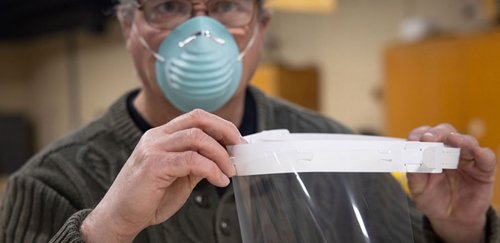
McLaughlin produces laser-cut face shields 24 times faster than those made on a 3D printer.
Personal protective equipment for frontline health-care workers, like face shields, masks, gowns and gloves, has been in short supply around the country amid the coronavirus pandemic.
Recognizing the need, RIC Professor of Technology Education Charlie McLaughlin, who heads the Langevin Center for Design, Innovation and Advanced Manufacturing at RIC, began researching methods of making face shields.
"I had heard that people were using 3D printers to make face shields and I couldn't understand why since they would take hours to produce. I researched and found a design by a maker in the United Kingdom – Domenic Morrow of Smoke and Mirrors – who uses a laser cutter to cut out the plastic frame that holds the face shield in place," he said.
Working out of the Langevin Center, McLaughlin programmed the laser cutter to cut the pattern for the frame out of 24” x 12” sheets of polystyrene plastic. Four frames can be cut from one sheet.
"I made 24 frames in the time it would take to make one on a 3D printer," he said. "I made 24 in an hour."
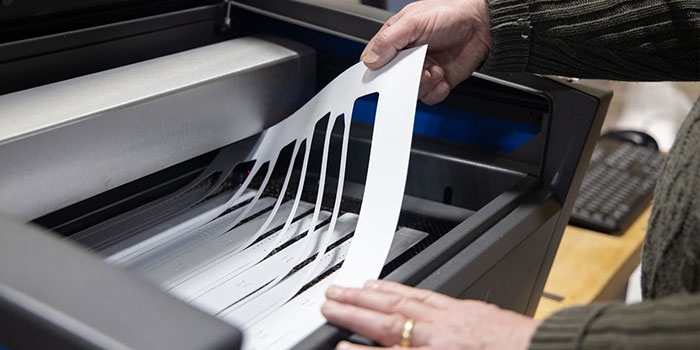
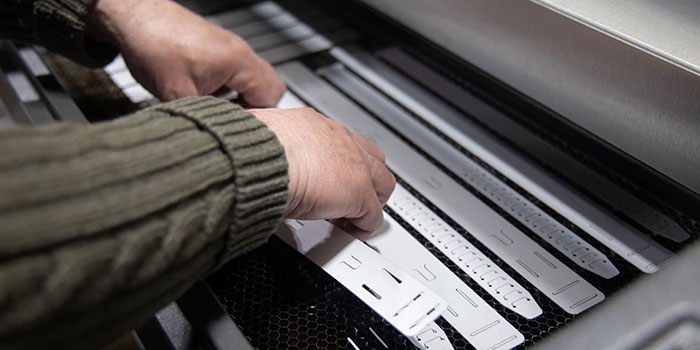
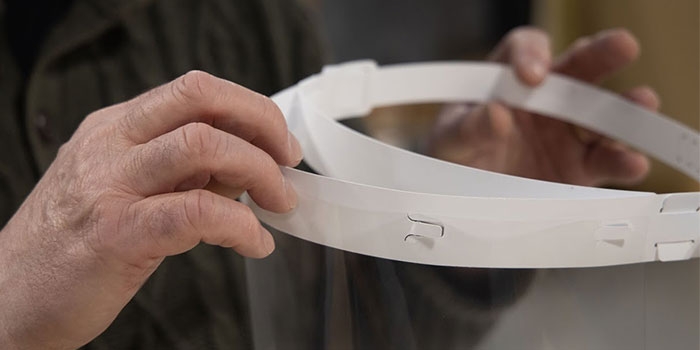
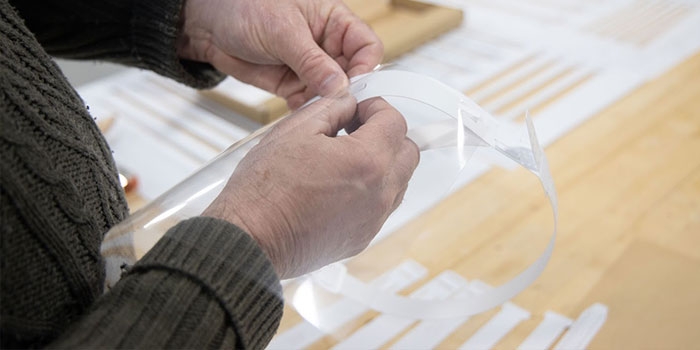
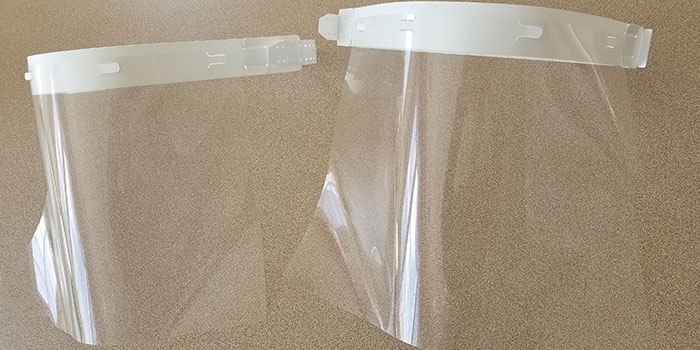
Assembly is completed when McLaughlin clips on face shields made of PETG plastic – the same material used for overhead transparencies – to the frames.
"It was also important that the parts be reusable," he said. "You can wipe down the frames [made of polystyrene plastic] with alcohol, but if you apply alcohol in concentrations of 70 percent or higher to the face shield it becomes foggy. That means they would need to be replaced after each use."
McLaughlin solved the problem by sanitizing the PETG plastic with eyeglass lens wipes, which has just enough alcohol to disinfect it without hazing. Health-care personnel will be able to do the same.
Donations of PETG plastic were provided by RIC's Department of Educational Studies; RIC's Department of Counseling, Educational Leadership, and School Psychology; and the Henry Barnard School at RIC.
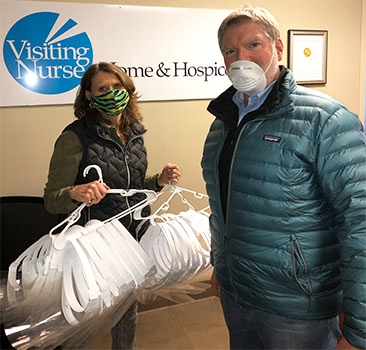
Mike Mullane, field representative for the Rhode Island Federation of Teachers and Health Professionals, heard through his wife and RIC employee Celeste Comeau-Mullane, director of the Office of Partnerships and Placements, that McLaughlin was making face shields and immediately contacted him.
"I told him my nurses and CNAs at Visiting Nurse Home & Hospice are very frightened about not having the proper protective gear, which could cause them to transmit the virus to their patients and expose their family members," Mullane said.
Mullane requested 22 face shields and donated two boxes of PETG plastic so that McLaughlin could make 60 more.
"These face shields are going to provide a significant measure of protection against virus transmission and fill the unmet need of providers on the frontline of care," said Mullane.
"I'm happy to help," McLaughlin said. "If it saves people from getting sick, then I've done my job."
